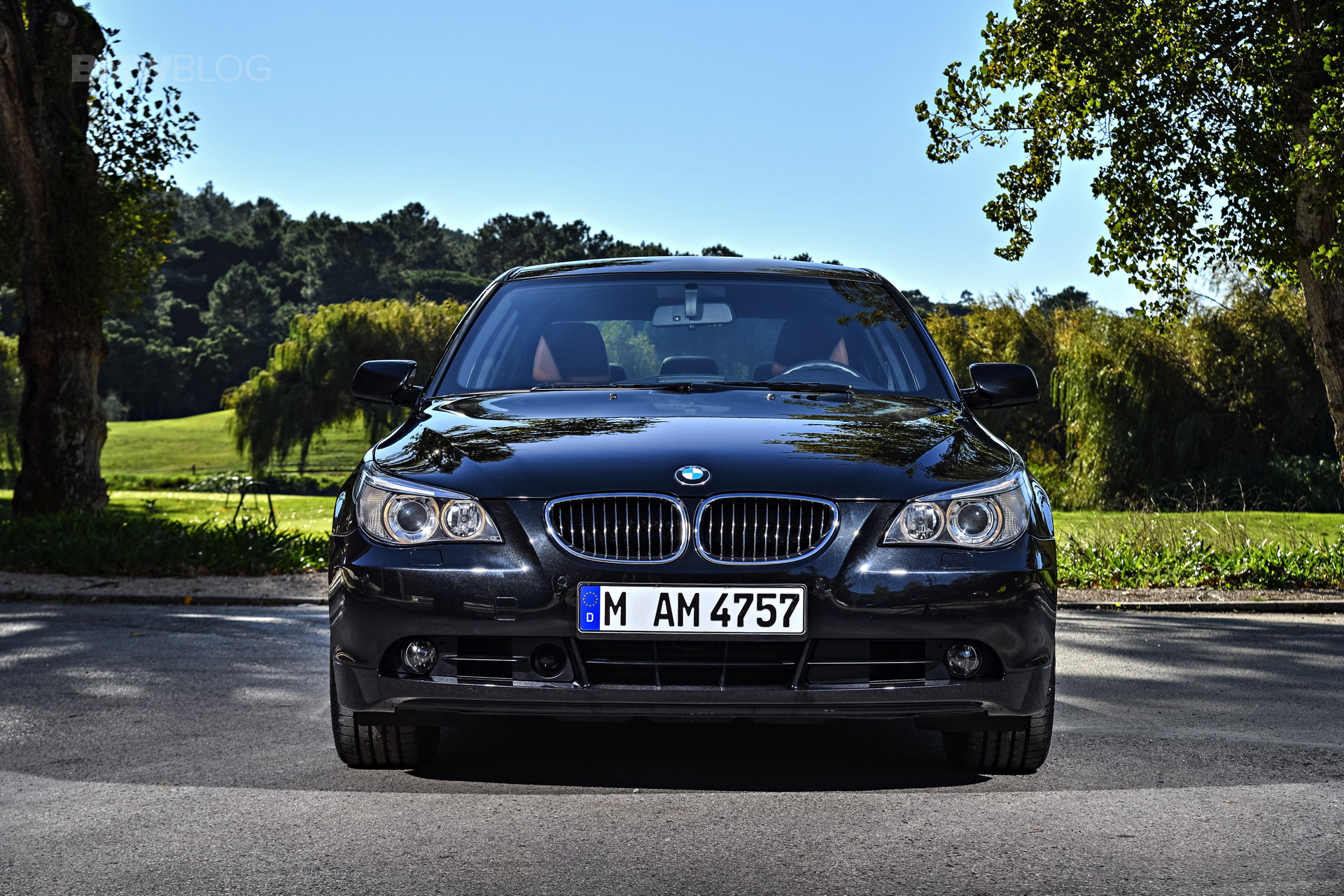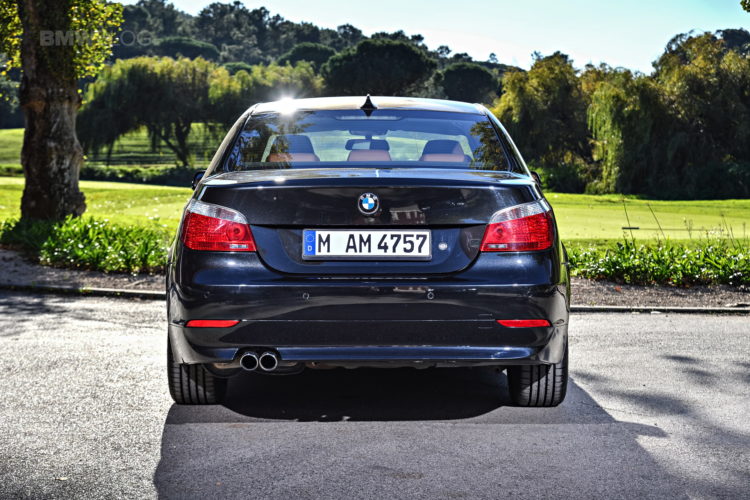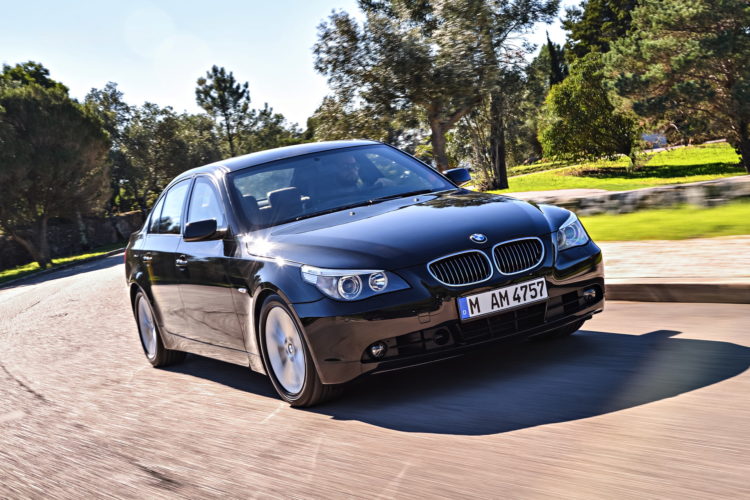BMW launched the E60 5 Series nearly 20 years ago – July 5th, 2003. It was a huge step toward the future, replacing the aging – but still very pretty – E39 5 Series. The fifth generation 5 Series closely followed in the footsteps of the contemporary 7 Series, the E65, inside and out. It was the first non-7 Series to come standard with the now-ubiquitous iDrive system and carried the torch of the Bangle-era “flame surfacing” design inherited from the Z4 and others. Twenty years later, we look at the contributions of one of the most under-appreciated BMWs ever.
Design of the BMW E60 5 Series

You can’t talk about the E60 5 Series without talking about its polarizing design. Part of the Chris Bangle era of BMW design, it was one of the earlier recipients (or victims) of the “flame surfacing” design language. Allegedly the product of a secret BMW project codenamed Deep Blue; designers were literally drawn to the flame for inspiration. A natural icon of unpredictably twisting characteristics and unexpected curves, it was just what the BMW design team – and Chris Bangle – was looking for. When looking at the E60 5 Series or other flame-surfaced BMWs, it’s impossible to miss the swoops and recesses on the body, stretched headlights, and beltline accent line. Inspiration came from the natural beauty – and natural chaos – of a flickering flame.
So, what did that mean for the 5 Series? It meant the E60 5 Series had to look remarkably different from the E39 5 Series. The goal was to set the brand up for the future by taking a significant departure from traditional designs. Nowhere in the design is that more evident than in the interior. A formerly driver-focused interior now allowed almost equal control to driver and passenger, thanks to a larger iDrive screen and easily accessible climate controls. This helped allow passengers change the music or input navigation instructions.
Despite the design of the E65 7 Series leading to a nearly 12,000-signature online petition calling for Bangle’s resignation, you’ll hear a lot of people say that many of the flame-surfaced BMWs are aging surprisingly well. The E60 5 Series – though arguably more easily digestible than the E65 – is among them. Twenty years later, opinion has softened, especially on the ultra-high-performance M5 variant.
Pioneering Technology, Prioritized Dynamics
The E60 5 Series didn’t just look different; it advanced the 5 Series significantly. iDrive, still in its infancy, provided onboard navigation, climate controls, and music selection all in one place. While maligned in-period, we can confidently say it’s one of the best media interface systems in the business. A head-up display was available for the first time on a production BMW. You could even get radar cruise control and a lane-departure system on the E60 5 Series.
Despite larger proportions, the standard E60 5 Series weighed about the same as the outgoing E39 5 Series. Boasting nearly 50/50 weight distribution, widespread use of aluminum in the chassis, and new tech like Active Roll Stabilization and Active Steering, the new car carried the performance torch of the E39 5 Series – and then some. Car and Driver managed 0.90 gs on their skidpad with an early E60 530i. For reference, an E39 530i with the Sport Package pulled 0.82 – the contemporary Porsche Boxster 0.93.
Under the hood is one of the few places that the E60 5 Series didn’t drastically change from its predecessor. Some would argue it was for the best since you got a silky inline-six or powerful, naturally aspirated V8 in the US. Manual or automatic transmissions were available throughout the E60 5 Series lineup and lifecycle. The same critics of the E60 5 Series’ design were enamored with how it drove, for obvious reasons.
The Unprecedented E60 BMW M5
Where the regular E60 5 Series impressed, The E60 M5 set a new bar. The cornerstone of the E60 M5 is its 5.0-liter V10 under the hood, heavily influenced by the Formula 1 engine of the time. With 500 horsepower on tap, it allowed the M5 to accelerate from zero to 60 mph in just 4.1 seconds and run a quarter mile in 12.5 seconds. It also weighed less than its competition, like the AMG CLS 55 and Audi S6. While the automated-manual SMG transmission left some engagement to be desired, US customers could even score this super sedan with a six-speed Getrag manual.
Twenty Years of the E60 5 Series
So, twenty years later, why is the E60 5 Series important? Well, it paved the way for the 5 Series we know today. The more tech-focused – and less driver-focused – cabin, for example. It’s also worth noting that while the fifth generation of the BMW 5 Series will always have its detractors, it’s definitely earning more fans of its aesthetic as time passes. History could repeat itself with the G8X series M vehicles. And, despite early criticism surrounding the E60 5 Series, it was the best-selling model in its class four years in a row, selling well over a million examples worldwide.
Of course, the E60 5 Series marked the last time we’ll ever see a production V10 from BMW. It’s one of the best-sounding cars you can get on the secondhand market this side of a Lamborghini. And the flame surfacing design gives the car a somewhat modern appearance, even today. Not to mention the radical E60 M5 Touring that never came to the US. Here’s hoping today’s BMWs age half as gracefully. Happy 20th anniversary, E60 5 Series.









































































